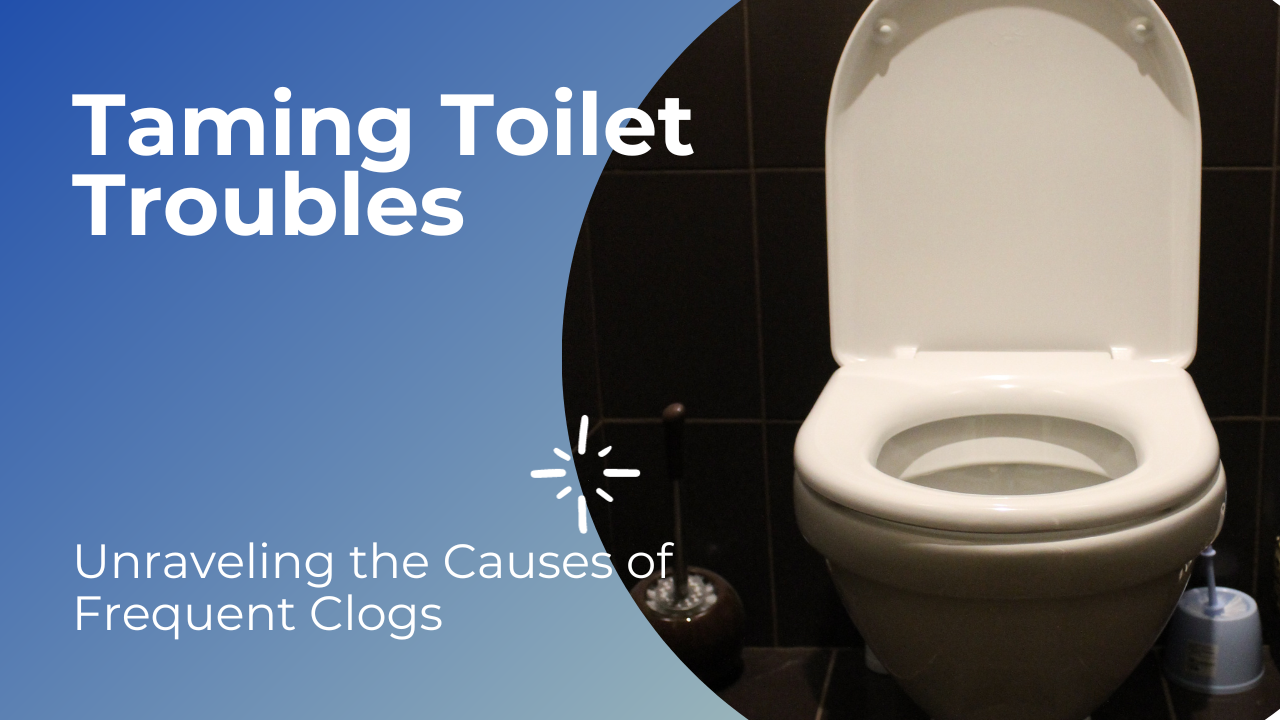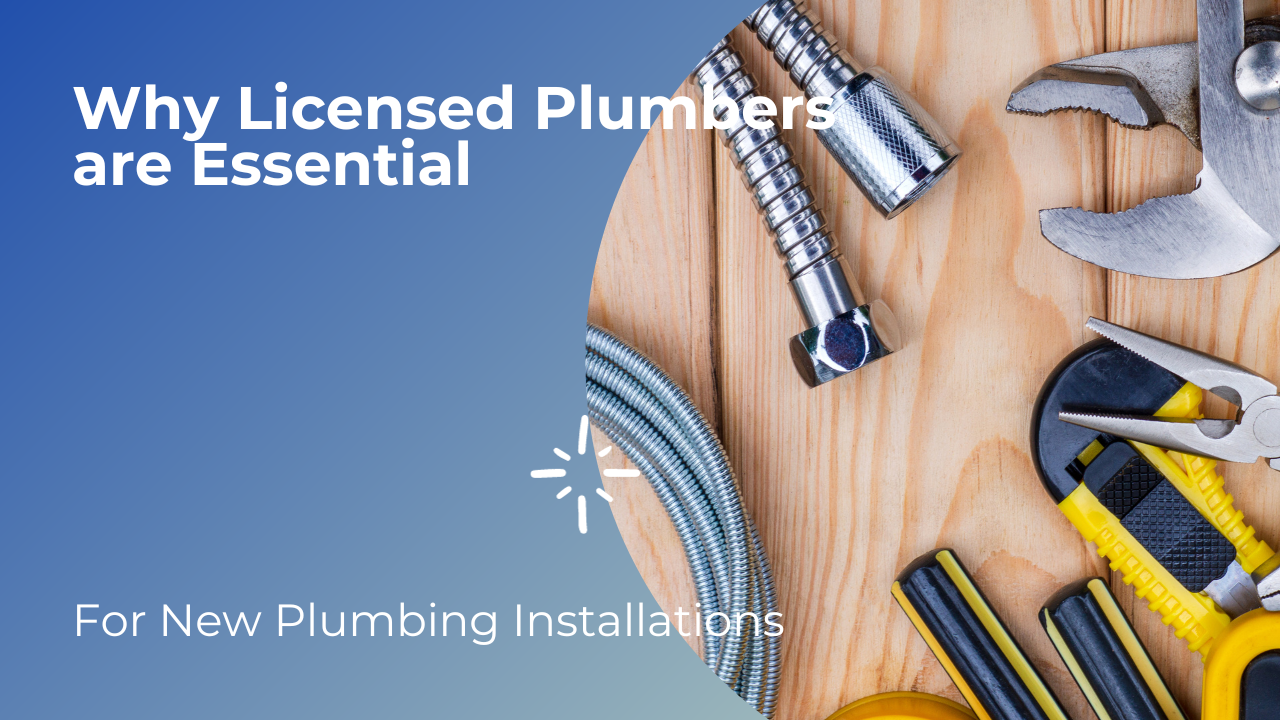Welcome to a guide that demystifies the signs of septic system issues, offering a step-by-step plan to inspect, fix, and maintain your system. A serene and hassle-free home experience is achieved by understanding and addressing potential septic challenges.

A Guide to Taming Frequent Toilet Clogs
Dealing with a perpetually clogged toilet is inconvenient and can also be a source of frustration. Understanding the reasons behind frequent clogs is the first step towards preventing them. This guide unravels the common culprits and provides practical tips to keep your toilet flowing smoothly.
Excessive Toilet Paper:
Using excessive toilet paper can indeed lead to plumbing issues such as clogs. Toilets and sewage systems are designed to handle a certain amount of waste and toilet paper, and using too much at once can overwhelm the system. This is especially true for older plumbing systems or septic tanks.
Flushing Non-Flushable Items:
Tossing items like facial tissues, wet wipes, or sanitary products down the toilet may seem convenient but can contribute to persistent clogs. Stick to flushing only toilet paper and human waste.
Low-Flow Toilets:
Low-flow toilets, designed to conserve water, may face challenges with flushing power. To optimize performance, it’s important to be mindful of usage and avoid overwhelming these toilets. Proper maintenance and awareness of their limitations contribute to efficient water conservation.
Hard Water Deposits:
Hard water, laden with mineral deposits, poses a common household challenge by building up in drains and creating a breeding ground for stubborn clogs. To maintain optimal drainage and prevent potential plumbing issues, it’s crucial to implement regular cleaning practices and consider the installation of a water softener.
1. Regular Cleaning:
Implement a routine cleaning schedule for your drains using effective cleaning agents. Vinegar and baking soda can be a natural and cost-effective solution to dissolve mineral deposits. Pour a mixture down the drain, let it sit, and then flush with hot water. This simple practice can help prevent the accumulation of minerals that contribute to clogs.
2. Water Softener Installation:
Consider investing in a water softener to address the root cause of hard water issues. Water softeners work by removing calcium and magnesium ions responsible for water hardness, preventing mineral buildup in pipes and drains. Installing a water softener not only improves the lifespan of plumbing fixtures but also reduces the likelihood of clogs and enhances overall water quality.
3. Eco-Friendly Drain Maintenance:
Opt for eco-friendly drain maintenance products that are gentle on both your plumbing and the environment. Enzyme-based cleaners can break down organic matter and help prevent mineral deposits, providing a sustainable alternative to harsh chemical cleaners.
4. Professional Maintenance:
Schedule periodic professional maintenance to inspect and clean your plumbing system. Plumbers can conduct thorough inspections, identify potential issues, and provide effective solutions to keep your drains free from mineral deposits.
Sewer Line Issues:
Recurrent clogs might indicate problems in the main sewer line. If you’re facing persistent issues, it’s time to bring in the professionals for a comprehensive inspection.
Tree Roots:
Outdoor plumbing systems are susceptible to tree root intrusion, causing clogs. Regular maintenance and inspections can help identify and address root-related problems.
Flushing Foreign Objects:
Ensure only toilet paper and human waste are flushed. Keep toys, hygiene products, and other non-flushable items out of the toilet bowl.
Old or Faulty Plumbing: Aging plumbing systems with narrow pipes or worn-out components are more prone to clogs. Consider upgrading your plumbing for a more efficient system.
Preventive Tips:
- To prevent drain overload, practice moderation in toilet paper use.
- Educate everyone about proper flushing etiquette to avoid accidental clogs.
- Make routine maintenance tasks, such as cleaning the toilet bowl and drain, a part of your regular cleaning regimen.
- Consider upgrading to a high-efficiency toilet with improved flushing capabilities to reduce the risk of clogs.
- Use a drain screen or trap to catch debris like hair and prevent it from entering the drain.
- If clogs persist despite your efforts, seek a professional plumbing inspection to identify and address underlying issues.
By incorporating these preventative measures into your routine, you can bid farewell to the woes of frequent toilet clogs and enjoy a smoothly functioning bathroom. Remember, a little prevention goes a long way in maintaining a trouble-free toilet.
A Guide to Fixing a Continuously Running Toilet
A continuously running toilet isn’t just an annoying sound; it can also lead to water wastage and inflated water bills. Fear not; we’ve compiled a step-by-step guide to help you troubleshoot and end this watery woe. Let’s dive into the world of toilet maintenance and get that flush-and-forget peace of mind.
Examine the Float and Fill Valve:
Pop the lid off the toilet tank and cast your eyes on the float, usually a ball or cup on a rod. Ensure the float is bobbing at the right level, stopping water flow when it reaches the desired height. An incorrectly positioned float could be the culprit behind the continuous flow.
Inspect the Flapper:
Direct your attention to the rubber flapper at the tank’s base, the gatekeeper for water entering the bowl during a flush. Verify that the flapper forms a snug seal; a worn or damaged flapper can let water slip through. Clean or swap out the flapper if needed.
Look for Leaks:
Embark on a mission to spot water leaks around the toilet and its environs, as tank or bowl leaks could contribute to the constant flow. Tighten any loose bolts and replace worn-out gaskets linking the tank and bowl.
Adjust the Fill Valve:
Meet the fill valve, the guardian of water levels in the tank. A misbehaving fill valve might be part of the continuous running drama. Follow the manufacturer’s playbook to tweak the fill valve, involving tasks like adjusting an elusive screw or relocating afloat
Clean or Replace Components:
Wage war against sediment and debris in the fill valve, flapper, and other crucial components. If a cleansing crusade doesn’t do the trick, consider changing the guard by replacing worn-out parts like the fill valve or flapper.
Seek Professional Assistance
If the toilet rebellion persists or the DIY plumbing arena feels uncharted territory, summon the cavalry—professional plumbers. Let the experts assess and conquer the issue, ending the continuous toilet saga.






